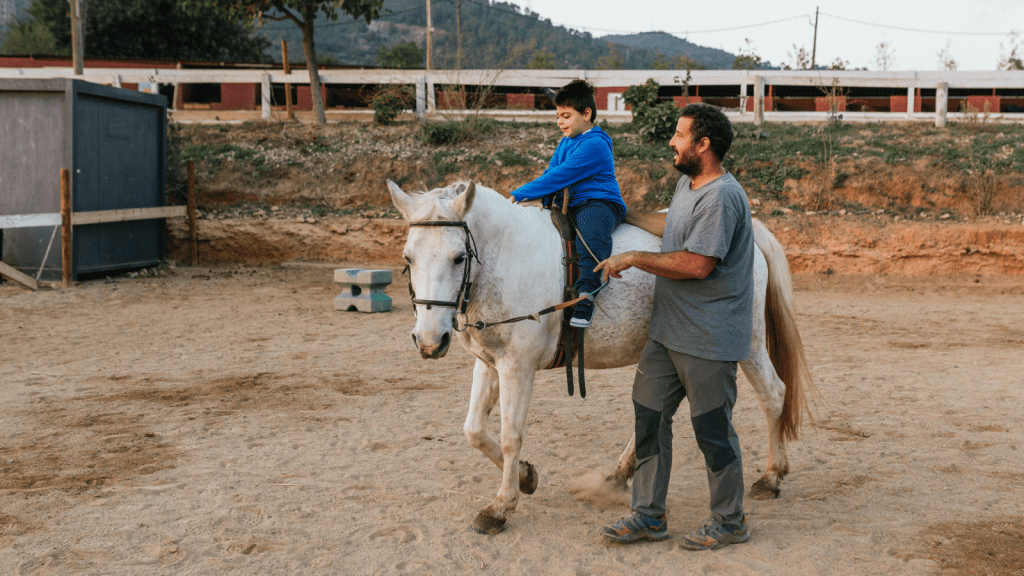Each year, doctors diagnose 8,000 to 10,000 babies with cerebral palsy. Roughly 1,500 more receive their diagnosis by the time they reach pre-school, making cerebral palsy the most common of all childhood disabilities. This widespread condition inhibits motor function and coordination, stiffens and weakens muscles, and often elicits uncontrollable tremors and spasms.
8 Forms of Physical Therapy for Children With Cerebral Palsy
To provide some relief for their children, many parents choose to use medications and injections as a means of treating the condition and lessening its effects. However, children can also benefit from physical therapy. From hydrotherapy to gait training, there are myriad therapies that can improve motor skills, balance, flexibility, and quality of life. Here are the eight we’ve outlined below.
1. Stretching
Passive and active stretching exercises are integral to many cerebral palsy therapies. However, researchers have discovered that passive stretching alone won’t result in lasting change in patients.
However, pairing this therapy with more active stretching exercises may make it effective. Moreover, dynamic stretching might be more useful in treating cerebral palsy patients.
2. Hippotherapy
Many therapists also use hippotherapy — or horseback riding — to improve fine motor skills and body functions in children with cerebral palsy.
While one journal review showed that this therapy could reduce the asymmetry of the hip abductor muscles, long-term riding didn’t produce any significant improvement in gross motor activity. Still, hippotherapy may be useful in improving attention and the ability to express thoughts and needs.

3. Aquatic Therapy
Gravity makes movement more difficult for everyone, especially those with cerebral palsy. Aquatic therapy removes this hurdle by providing buoyancy, facilitating easier and safer movement.
Additionally, hydrotherapy can reduce discomfort, boost self-confidence, increase independence, improve flexibility, and help patients gain more muscle control. Most sessions are 30 to 45 minutes long and cater to the needs of each individual.
4. Electrical Stimulation Therapy
Many children with cerebral palsy suffer from muscle spasms and aren’t able to control these movements. Often, they walk slowly and have difficulty completing mobility tasks. Electrical stimulation therapy may offer a solution.
Small currents of electricity can improve muscle recruitment and strength gain, helping them walk faster and carry out mobility tasks more efficiently.
5. Vibration Therapy
Whole-body vibration therapy can also increase muscle mass and bone density, making movement more accessible for patients. After this treatment, many patients can walk faster and stand more easily.
While short-term treatment shows no adverse effects, scientists must conduct further research to determine the likelihood of long-term hazards. As with the previous forms of therapy, many therapists recommend implementing vibration therapy in conjunction with other types.
6. Gait Training
While a few of the previous therapies are useful in improving patients’ ability to walk and stand, gait training focuses explicitly on developing gait speed and functionality of movement.
Gait training exercises often involve walking on a treadmill, lifting the legs, and practicing stepping over obstacles. This therapy may be the most effective for improving speed, even compared to strength training.

7. Constraint-Induced Movement Therapy
For children with unilateral or hemiplegic cerebral palsy, constraint-induced movement therapy may be useful. This treatment involves applying a cast or splint to the uninvolved limb, encouraging the patient to use their affected arm.
In some cases, this method does improve bimanual performance, which increases the spontaneous use of the more affected limb. As patients gain control over both arms and hands, they’ll inevitably gain more confidence and independence.
8. Cardiorespiratory Training
Children with cerebral palsy use more energy to walk and move than kids without the condition. Yet, their immobility limits them from engaging in anaerobic and aerobic activity. This inactivity can lead to diabetes, obesity, and a slew of other health problems.
Thus, many children with cerebral palsy use cardiorespiratory training to stay fit. While this training doesn’t directly improve their spasticity or movement patterns, it can benefit their overall health and improve physiological outcomes.
Which Therapy Is Best?
When choosing therapy for your child, you may wonder which method will most efficiently treat their condition. However, there is no perfect solution. Often, the best treatment involves more than one type of therapy.
“The key to success in cerebral palsy treatment is understanding that there is no one-size-fits-all approach. It requires a multifaceted approach tailored to each individual.” – Birth Injury Malpractice Owner.
Each method will produce a different outcome depending on your child’s condition and symptoms. You can find a solution that works best for you and your little one through trial and error.
